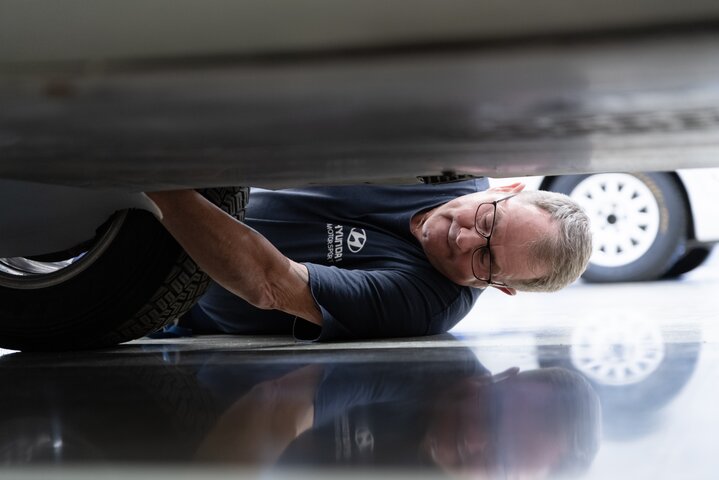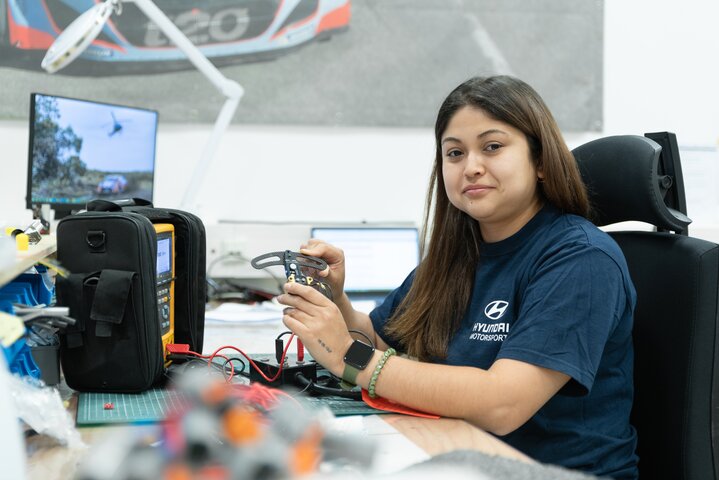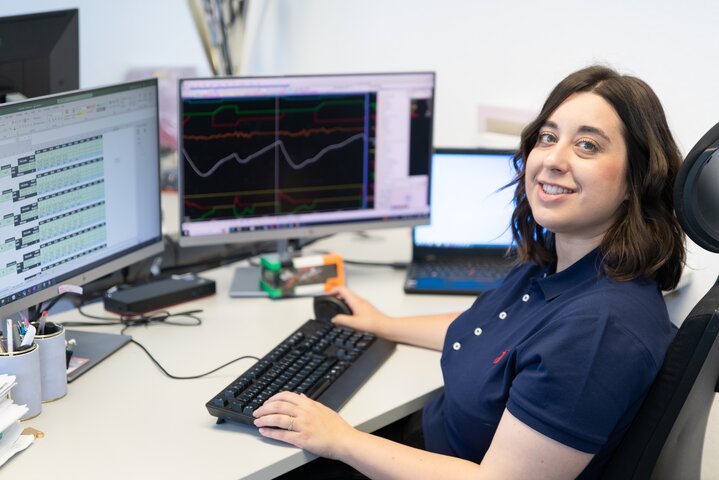A ‘number one’ at Hyundai Motorsport

As number one mechanic for Thierry Neuville, Anthony Barth was thrust into the limelight when given the honour of accepting the winning manufacturer trophy on behalf of Hyundai Motorsport at the 2024 Rallye Monte-Carlo.
It was an unforgettable moment for Anthony, who was first attracted by the speed and unique spectacle of rallying as a child: “I just love this sport!”
Here, Anthony explains the role of a number one mechanic, some of the challenges faced, that special moment in Monte Carlo and more.
Hi Anthony, can you tell us about your background and why you became a motorsport mechanic?
When I was a child, my father and I watched Formula One together on Sundays. It was always a big battle because he supported one team, and I supported another! So I guess my competitive spirit comes from there.
Then, as I grew up, my interest spread to other motorsports. Rallying also became massive in my region when Sebastian Loeb became the world champion; Marcus Gronholm, Gilles Panizzi and Walter Rohrl were the ones who made me love rally. I watched as many rallies as I could. I just love this sport!
My professional career includes five years as a mechanic, including Saintéloc Racing and Peugeot Sport, which introduced me to life at a factory team. I joined the Hyundai Motorsport test team in January 2019 to work on the development of the car. I also got to do a few rallies and moved up to number one mechanic for the test team. Then, I jumped full-time into the race team.
How would you describe the role of a first mechanic and how is it different from the other mechanics?
It’s completely different because you are not actually working on the car yourself, in the way that a normal mechanic does. I made that mistake at the beginning; I wanted to keep working on the car because I liked it so much.
However, as a number one mechanic, you need to take a step back and look at the overview of the service or the build-up of the car.
In that sense, we act as the link between the driver, the engineers, the design office and the car itself. Plus, our job is to organise the service and build-up of the car in the workshop.
We make sure everything is in perfect spec and if there is an issue, we decide the best way to solve it. Teamwork and trust between the driver, mechanics and is super important. We all form a really close bond.
Can you give us an example of a particularly challenging situation or rally?
For sure, it would be Rally Kenya!
2022 was super tough because we were running low on spare parts and every time the car went out, we were losing more parts. So between every service, we had to think on our feet and find a way to fix the broken parts.
Then this year, 2024, the services were super busy. First, we had to change the fuel tank. Then a puncture, which damaged the complete rear bodywork, as well as fixing some damage to the hybrid system. We were changing a lot of parts in a 30-minute service.
On Sunday, the impact from a massive rock broke the rear right corner and rear diff. So, in 15 minutes, we had to change the complete rear axle and a bit of bodywork! Given the damage and time available, I was super impressed with how smoothly we managed it all, but that’s what we prepare for. And we won the power stage as a reward.
As the first mechanic on Neuville’s car, you not only witnessed his victory in Monte-Carlo but received the winning manufacturer trophy. That must have been very special.
Monte-Carlo is the most iconic rally on the calendar and everybody’s dream is to win it. So just to be part of the winning team is already a huge achievement. Then I got really lucky because they asked me to accept the trophy for the winning manufacturer.
It was something I’d never even thought about because usually, it’s a team principal or president who collects the trophy. Being there in front of the Casino Monte-Carlo with all the big names of rallying was really a huge privilege and something I will never forget!




